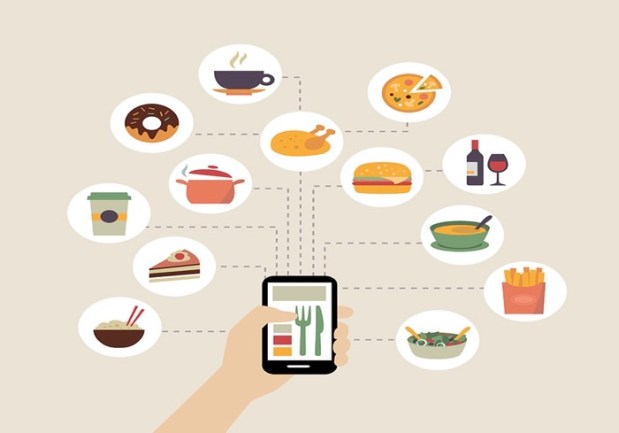Navigating Niche: How Peach Is Breaking Into A Crowded Marketplace

Scarlett O’Hara famously closed out the first part of “Gone With The Wind” with, arguably, the book’s (and movie’s) most famous line: “As God is my witness, I’ll never be hungry again.”
It seems Scarlett has more than a few fans in Silicon Valley as a surprisingly large segment of the tech marketplace seems dedicated to making sure no one ever experiences hunger for more than 30 consecutive minutes again — let alone actually go hungry. Instacart comes bearing groceries, GrubHub and Postmates come bearing takeout, Munchery and Lish are about serving up chef-prepared cuisine on demand — and that isn’t even going into the big players who’ve made big bets on food delivery in one of its myriad forms. Amazon, Google, Yelp and Square are just the beginning of another long list.
And with so many coming into the marketplace with so many bright ideas to better connect the upper-middle class to a more balanced diet, it can be hard to imagine how a firm like Peach, which only first stepped into the market about a year ago in June 2014, can separate itself.
“Obviously, with so much competition in the field, our first goal is to snap up as much market share as we can,” Nishant Singh, Peach’s founder noted in an interview.
And those efforts — so far at least — have been pretty compelling. In the last 14 months, Peach has delivered over 400,000 meals throughout its home city of Seattle. Earlier this week, Peach announced it had secured $8 million in VC funding from the Madrona Venture Group and Vulcan Capital. That money will be put toward helping Peach take its show on the road — specifically to Boston and Washington, D.C.
So what is the magic?
“We just want to disrupt lunch for office workers everywhere,” Singh explained.
Peach doesn’t quite deliver food to the door of a customer. Instead it delivers to companies or office buildings once a critical mass of lunch customers have signed on for the service. Throughout the course of the morning, office workers in serviced buildings make their lunch choice from a curated menu — generally, they have the choice of a meat dish, veggie dish or “light” dish from a local restaurant.
That menu is sent off via text message. Users who tweet back “Yes” and a lunch choice will find their meal awaiting them at their business’ front desk at noontime. In their Seattle home, the ranks at Amazon, Microsoft, Zillow and Facebook all include Peach customers; in San Diego, workers at Qualcomm, Jack in the Box and The San Diego Union-Tribune all rely on Peach for lunch.
“We don’t deliver the food — though we can arrange for third-party delivery,” Singh explained. “We take the order and hand them off to our restaurant partners, who then can deliver en masse to one location instead of making inefficient trips back and forth during high-traffic times.”
Instead, he noted, Peach really earned the 20 percent fee it adds to the cost of meals as it fees in its ability to connect consumers to food they want and offer its restaurateur partners a crack at a larger and more enthusiastic consumer base than they might have been able to reach on their own.
“We curate the lunches, and we are getting very good about applying what we have learned about user preferences to improving the service,” he said. “We have a pretty good idea about which worker sets like what. For example, with Qualcomm, we’ve seen that a lot of people like Asian or Indian food, so we offer more of those [dishes].”
The secret sauce, Singh told PYMNTS, is simplicity.
“Everything about our service speaks to making it as easy and straightforward for the consumer. We deliver through text, we limit the options so users don’t have to spend a ton of time staring at a menu and we make the routine very predictable,” Singh said. “The trick in any retail — but especially retail in a popular segment like food — is to find what needs doing and then do it better. We make it as easy and routine as possible to have a different lunch everyday but one that you can reasonably expect to like.”
The challenge, he said, particularly in food, is to keep those choices fresh, rotating and like a constantly renewing value proposition for restaurants.
“We always have a challenge to get food on the platform,” he noted.
But it is a challenge they have so far met and continue to meet going forward. And the extra $8 million they have to do it with? Well, that probably won’t hurt.
